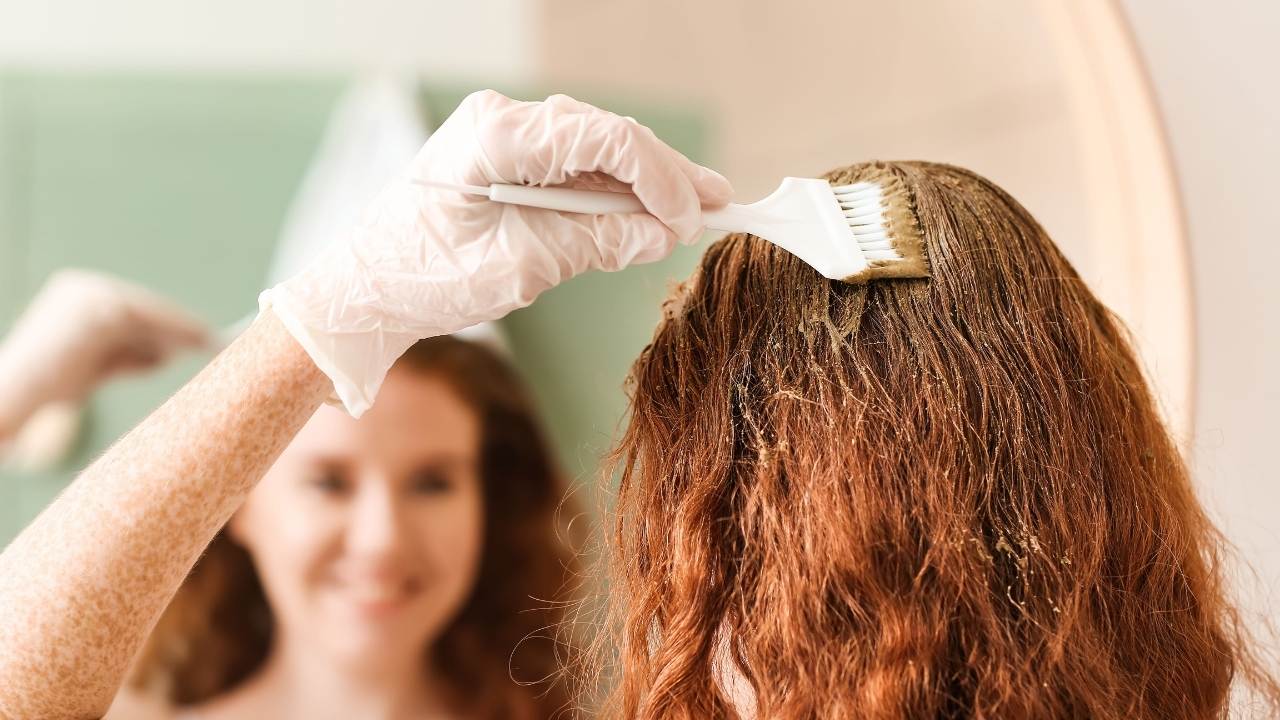Introduction
In the quest for luscious locks, many individuals are exploring natural alternatives to chemical hair dyes. Henna, a plant-based dye, has gained significant popularity not only for its vibrant color but also for its alleged hair growth benefits. In this article, we’ll delve into the world of henna and chemical hair dyes to determine which one promotes hair growth better.
Understanding Henna
Henna, also known as Lawsonia inermis, is a natural dye derived from the leaves of the henna plant. It has been used for centuries in various cultures for hair coloring and body art. Henna is celebrated for its herbal properties and ability to strengthen hair.
Chemical Hair Dyes: A Quick Overview
On the other hand, chemical hair dyes are synthetic products containing a mix of chemicals, including ammonia and hydrogen peroxide. They are widely used for their convenience and ability to provide a wide range of colors.
The Science Behind Hair Growth
Henna’s Role in Hair Growth
Henna enhances hair health by strengthening strands, soothing the scalp, and boosting blood circulation, all contributing to improved hair growth.
1. Strengthening Hair Strands
Henna’s application creates a protective layer on each hair strand, effectively shielding it from external damage. This barrier minimizes the occurrence of breakage and split ends, contributing to overall hair health and, in turn, facilitating the growth of longer and stronger hair.
2. Improving Scalp Health
Henna’s antimicrobial properties not only enhance hair strength but also contribute to a healthier scalp. By reducing dandruff and itchiness, it creates a more conducive environment for hair growth. A balanced, dandruff-free scalp is vital for nurturing robust and flourishing hair.
3. Enhancing Blood Circulation
The application of henna to the scalp offers a dual benefit: not only does it provide vibrant color, but it also enhances blood circulation. This increased blood flow ensures that hair follicles receive the essential nutrients and oxygen they need to thrive, ultimately promoting healthier and potentially faster hair growth.
Chemical Hair Dyes and Hair Growth
Chemical hair dyes, with their vibrant color options, can have detrimental effects on hair growth. These include hair damage and potential allergic reactions, hindering your quest for longer, healthier locks.
1. Hair Damage
The chemicals in hair dyes can weaken hair strands, making them prone to breakage and thinning. This increased vulnerability can lead to hair that appears brittle, lifeless, and more susceptible to damage from external factors like heat styling and environmental stressors.
2. Allergic Reactions
Certain individuals may develop allergies when exposed to the chemicals present in traditional hair dyes. These allergic reactions can manifest as scalp irritation and, in severe cases, result in hair loss. It’s essential to perform a patch test before using chemical dyes to mitigate these potential adverse effects and ensure a safe coloring experience.
Application Process
Henna Application
Chemical hair dyes involve a complex process, necessitating the blending of diverse chemicals and developer solutions. The application duration fluctuates according to the specific product being used. This intricate procedure demands precision and care to achieve the desired hair color, often extending the time required for application compared to the simpler process of using henna.
Chemical Dye Application
Chemical hair dyes involve a complex process, necessitating the blending of diverse chemicals and developer solutions. The application duration fluctuates according to the specific product being used. This intricate procedure demands precision and care to achieve the desired hair color, often extending the time required for application compared to the simpler process of using henna.
Longevity of Color
Henna’s Lasting Power
Henna imparts a semi-permanent hue that gracefully mellows as time passes. What’s intriguing is that with successive applications, the color can remarkably intensify, offering a captivating and evolving shade for those who choose this natural dye.
Chemical Dyes’ Longevity
Chemical dyes provide an extensive palette of colors, catering to both permanent and semi-permanent preferences. The durability of the color largely hinges on the specific dye variant chosen. Permanent dyes offer long-lasting vibrancy, while semi-permanent options gradually fade over time, allowing for versatility in changing one’s hair color.
The Verdict: Which Promotes Hair Growth Better?
When it comes to promoting hair growth, henna holds a distinct advantage over chemical hair dyes. Its natural properties not only enhance hair strength but also improve scalp health and blood circulation. On the other hand, chemical dyes, while providing a plethora of color choices, can potentially damage hair and irritate the scalp, hindering the growth process.
Conclusion
In the age-old debate of henna vs. chemical hair dyes, it’s clear that henna, especially rajasthani henna powder manufacturer, emerges as the winner when it comes to promoting hair growth naturally. Henna not only imparts a beautiful reddish hue to your hair but also works wonders for its overall health. If you’re looking to nurture your locks while adding a touch of color, henna might just be the perfect choice for you. Its natural properties strengthen hair, improve scalp health, and enhance blood circulation, all of which contribute to healthier and longer locks. Moreover, henna’s semi-permanent color ensures a gradual and graceful fade, allowing you to enjoy its benefits for an extended period. So, give your hair the care it deserves with the ancient magic of henna.


